Southern-Style
|
|---|
|
Mission San Luis
♥♥♥♥ Highest Recommendation by Southern-style. One of the best living history experiences to be found. Website
|
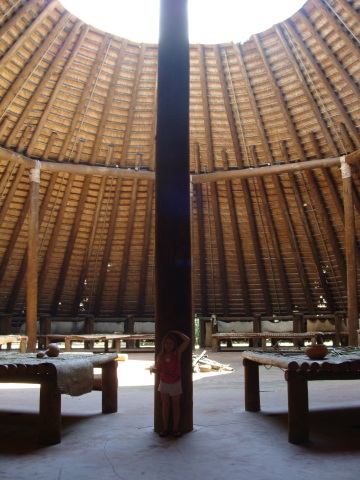 |
Jamestown was founded in 1607. The Mayflower landed in America in 1621. Charleston was settled in 1629. St Augustine was not established until 1665. But, in 1656, the Spaniards had decided to build their western capital on one of the seven high hills in that area. The Apalache Indians co-existed well with the Spaniards because the Spanish had little to do with the native population's tribal affairs. Friars had been requested by the Native Americans since 1608, perhaps in response to the diseases that decimated their people over which their shamans and chiefs had no power. The three groups joined forces for their mutual protection with the monks providing for the religious aspects of their lives, the Spanish contributed military protection and the Apalache supplied the labor. They chose the second highest of the seven hills in that area of Florida upon which to build the Council House for the Apalache and the Mission Chapel for the Franciscan monks. It became the northern anchor for the El Camino Real (The Royal Road) with St. Augustine eventually becoming the southern anchor. Trees were leveled around the hill for defensive reasons and a channel was cut from the spot where the FSU football stadium now stands to a tributary creek that flows into the Wakulla River and down to St. Marks that was the deep water destination for distribution to canoes that would then travel up the Wakulla with provisions for the fort. . |
|||
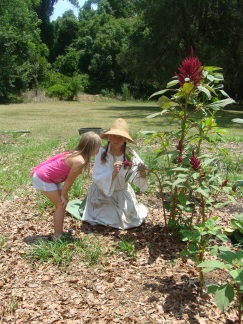 |
The amazing thing about Mission San Luis is not only the fact that at this site is recreation of the largest Council House found among the Native Americans (its size indicates a population of 2,000 to 3,000 Apalache Indians) but that it and all the other buildings have been reconstructed on the original spot where the village was built 350 years ago. | 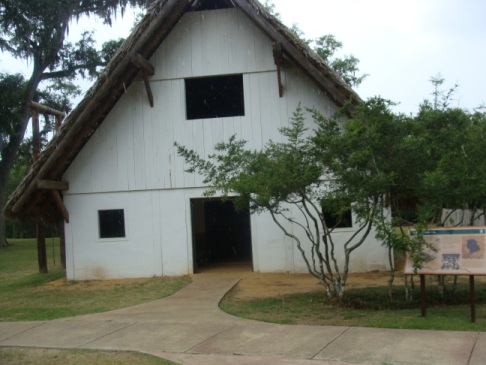 |
|||
| The extremely well educated and knowledgeable docents take the parts of the original residents and educate visitors to the history of Mission San Luis as well as their way of life. The plant she is showing this young guest was a source of a form of flour. |  |
Upon entering the quiet sanctuary out of the light and into the dim light of the Mission, one feels an awesome presence and a compelling urge to kneel at the front of the church as so many would have done in the past. Beneath those dirt floors are buried the bodies of 800 souls who died at there at Mission San Luis. All would have stood for services. The Apalache would have worshipped in the balcony accessible by stairs that would have led to the opening above front door. |
|||
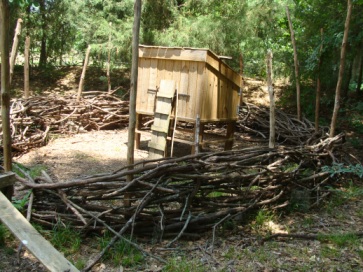 |
This Spanish house would have been inhabited by one such as the Spanish lady, Juana Catarina, Her kitchen dining room would have been furnished as the picture to the right indicates. A fort was built when the South Carolinians, fearful of Indian attacks from the south, decided upon a preemptive attack upon Mission San Luis in 1704. All of the buildings were burned and the inhabitants fled. The Spanish soldiers headed back to St. Augustine, but their families went west. Juana Catarina had mistreated her Apalache servants and somehow along the route to Vera Cruz, Mexico, with her 11 children, the casque with her jewels, all of her worldly wealth, was stolen. Upon reaching Vera Cruz, this estimable lady had trouble convincing anyone she was from a proud Spanish family and went to court to prove her assertion. | 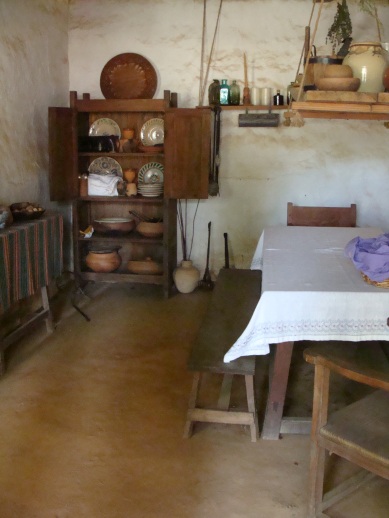 |
|||
| The chicken house with its wattle fence had just been the site of a sad occasion on the day of our visit. A fox which found its home in the woods about the Mission had new kits that it was teaching to forage. A rooster met its end early one morning even as guests were entering the facility. The chickens were moved to a safer spot. | 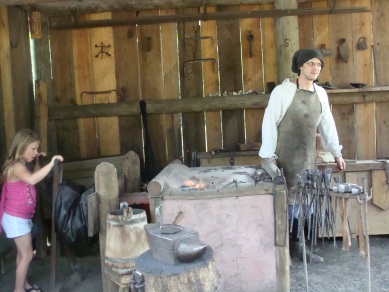 |
Nails were one of the most valuable commodities of the time. They were listed indiviually on manifests. Here a guest uses the machinery of the time, a bellows to heat the fire where the iron would be forged and then beaten into the shape of a nail. | |||
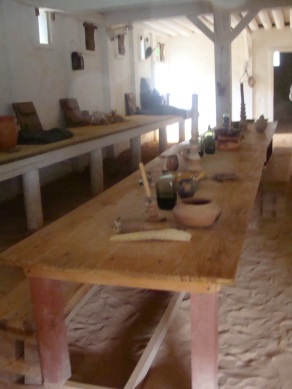 |
Docents explain the economic system that operated between the colonies and Spain. Furs were one major commodity. Both the picture to the right and to the left were taken inside the thickly walled daub and wattle walls that were then stuccoed. |
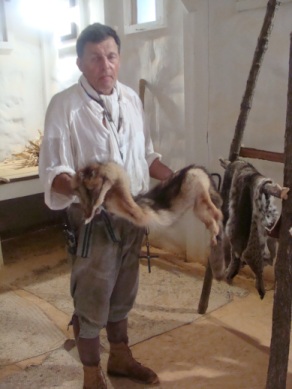 |
|||